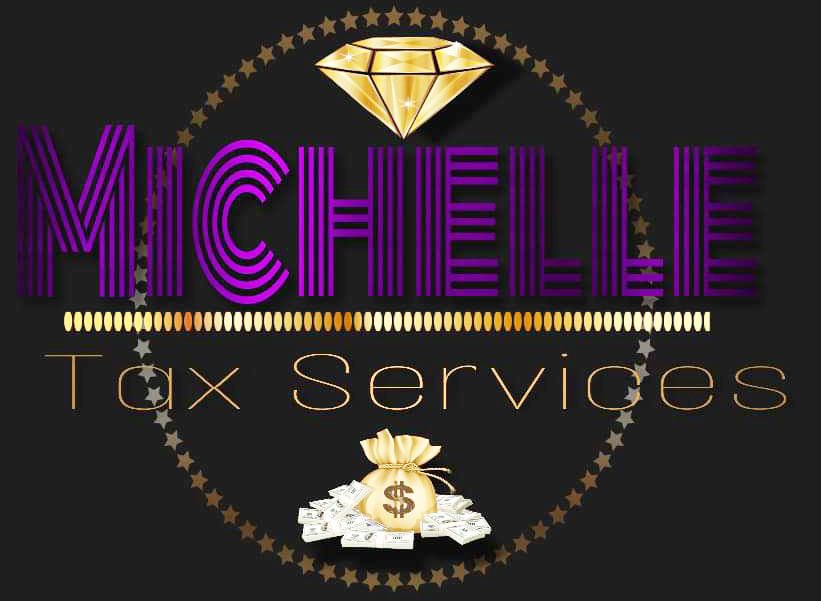
At Michelles Tax Service we stay focused on helping you navigate the confusion around taxes, business set ups, and personal finance. Call us today and let us help you make the most of your money!
Need Help with PPP (Payroll Protection Program)?
- New business set up
- Personal tax preparation, consultation, and filing
- Business tax preparation, consultation, and filing
- Non-Profit tax preparation, consultation, and filing
- W4 and L4 filings
- Audit assistance
- Paying quarterly estimated taxes
Need Help with PPP (Payroll Protection Program)?
Planning Ahead is so Important When it Comes to filling your taxes
Take the pressure out of tax prep and help make sure you never miss a deduction with these key tips:
1. Choose a Preparer
Be sure that the person you choose has a Preparer Tax Identification Number (https://www.investopedia.com/terms/p/ptin.asp) (PTIN) showing that he or she is authorized to prepare tax returns. Also inquire about the fees, which likely will depend on the complexity of your return; steer clear of anyone taking a percentage of your refund (https://www.investopedia.com/terms/r/refund.asp) . The IRS has other tips for choosing a preparer (http://www.irs.gov/Tax-Professionals/Choosing-a-Tax-Professional) , including a link to the IRS directory of preparers (http://irs.treasury.gov/rpo/rpo.jsf) (you can search according to their qualifications).
2. Schedule an Appointment
The sooner you meet with your preparer, the sooner you can begin the process (even if you get an extension, as discussed later). It is especially important to act promptly if you anticipate a refund so you can receive your money promptly. If you wait too long to schedule an appointment, you may not get to see your preparer before April 15, which could mean you won’t be advised of actions that can still lower your current year tax bill, such as your eligibility for making deductible contributions to IRAs (https://www.investopedia.com/terms/i/ira.asp) and health savings accounts (https://www.investopedia.com/terms/h/hsa.asp) for the current tax year..
3. Gather Your Information Returns
Make sure you have homeowner’s policy’s, W2’s, Investment docs, and mortgage papers. This is not a complete list; the IRS has information on the many other types of information returns (http://www.irs.gov/Government-Entities/Indian-Tribal-Governments/Information-Returns-Filing-Chart) you may need
a. Form W-2 (https://www.investopedia.com/terms/w/w2form.asp) , if you have a job
b. Form SSA-1099, if you received Social Security benefits
c. Various 1099s to report income such as cancellation of debt (https://www.investopedia.com/terms/c/cancellation-of-debt.asp) (1099-C), dividends (https://www.investopedia.com/terms/d/dividend.asp) (1099-D), interest (1099-INT), and nonemployee compensation paid to independent contractors (https://www.investopedia.com/terms/i/independent-contractor.asp) (1099-MISC) (Note: Brokers don't have to mail Form 1099-B (https://www.investopedia.com/terms/f/form-1099-b.asp) , which reports gains and losses on securities transactions, until January 31.)
d. Form 1095-A (https://www.investopedia.com/terms/f/form-1095a.asp) to report information from the government Marketplace from which you purchased health coverage
e. Various 1098s reporting mortgage interest (https://www.investopedia.com/terms/m/mortgageinterest.asp) (1098), student loan interest (1098-E) and tuition payments (1098-T)
f. Form W-2Gs for certain gambling winnings
g. Schedule K-1s from entities in which you have an ownership interest, such as S corporations (https://www.investopedia.com/terms/s/subchapters.asp) , partnerships, limited liability companies (https://www.investopedia.com/terms/l/llc.asp) , trusts or estates (Note: You may not have received them yet; they are due by the first March 15 following the end of the partnership's tax year; check with the entity if one doesn't arrive.)
a. Form W-2 (https://www.investopedia.com/terms/w/w2form.asp) , if you have a job
b. Form SSA-1099, if you received Social Security benefits
c. Various 1099s to report income such as cancellation of debt (https://www.investopedia.com/terms/c/cancellation-of-debt.asp) (1099-C), dividends (https://www.investopedia.com/terms/d/dividend.asp) (1099-D), interest (1099-INT), and nonemployee compensation paid to independent contractors (https://www.investopedia.com/terms/i/independent-contractor.asp) (1099-MISC) (Note: Brokers don't have to mail Form 1099-B (https://www.investopedia.com/terms/f/form-1099-b.asp) , which reports gains and losses on securities transactions, until January 31.)
d. Form 1095-A (https://www.investopedia.com/terms/f/form-1095a.asp) to report information from the government Marketplace from which you purchased health coverage
e. Various 1098s reporting mortgage interest (https://www.investopedia.com/terms/m/mortgageinterest.asp) (1098), student loan interest (1098-E) and tuition payments (1098-T)
f. Form W-2Gs for certain gambling winnings
g. Schedule K-1s from entities in which you have an ownership interest, such as S corporations (https://www.investopedia.com/terms/s/subchapters.asp) , partnerships, limited liability companies (https://www.investopedia.com/terms/l/llc.asp) , trusts or estates (Note: You may not have received them yet; they are due by the first March 15 following the end of the partnership's tax year; check with the entity if one doesn't arrive.)
4. Get Your Receipts Together
We suggest saving and sorting them throughout the year so nothing gets lost or missed.
5. Gather Records for Charitable Contributions
Keep a record of weekly or monthly church donations and any donations made to places like Goodwill or the Salvation Army. These are two things many people miss!
Find details about the type of records needed for charitable deductions (http://www.irs.gov/pub/irs-pdf/p1771.pdf) in IRS Publication 1771 (http://www.irs.gov/pub/irs-pdf/p1771.pdf) .
Find details about the type of records needed for charitable deductions (http://www.irs.gov/pub/irs-pdf/p1771.pdf) in IRS Publication 1771 (http://www.irs.gov/pub/irs-pdf/p1771.pdf) .
6. Make a List of Personal Information
- Social Security number
- Address, email, and contact phone number
- Occupation and place of employment
- Marital status
- List of dependants or any other adults in the home that you claim and their Social Security numbers
- Decide What to Do About a Refund
- If you expect a refund, you have several options for what you want the government to do:
- Apply some or all of the refund toward your tax bill on the next return. The fund will be used for estimated taxes (https://www.investopedia.com/terms/e/estimated-tax.asp) , reducing or eliminating the first installment of estimated taxes (due April 15).
- Send you a check or deposit the refund directly into your checking or savings account (https://www.investopedia.com/terms/s/savingsaccount.asp) .
- Directly contribute some or all of your refund to certain types of accounts (IRAs, health savings accounts, education savings accounts) or to buy U.S. Savings bonds (https://www.investopedia.com/terms/u/ussavingsbonds.asp) through Treasury Direct (http://www.treasurydirect.gov/) .
7. Find a Copy of Last Year’s Return
8. Decide Whether to Ask for a Filing Extension
If you need more time to complete all of these tasks, you can request a filing extension to October 15th. This will avoid any late-filing penalty, but be sure to pay what you think you’ll owe to minimize or avoid any late-payment penalty. There’s no extension beyond April 15 for paying the tax that is due.
Schedule Your Free Consultation Today
Take the first step towards growing your business by contacting us for a free consultation.
